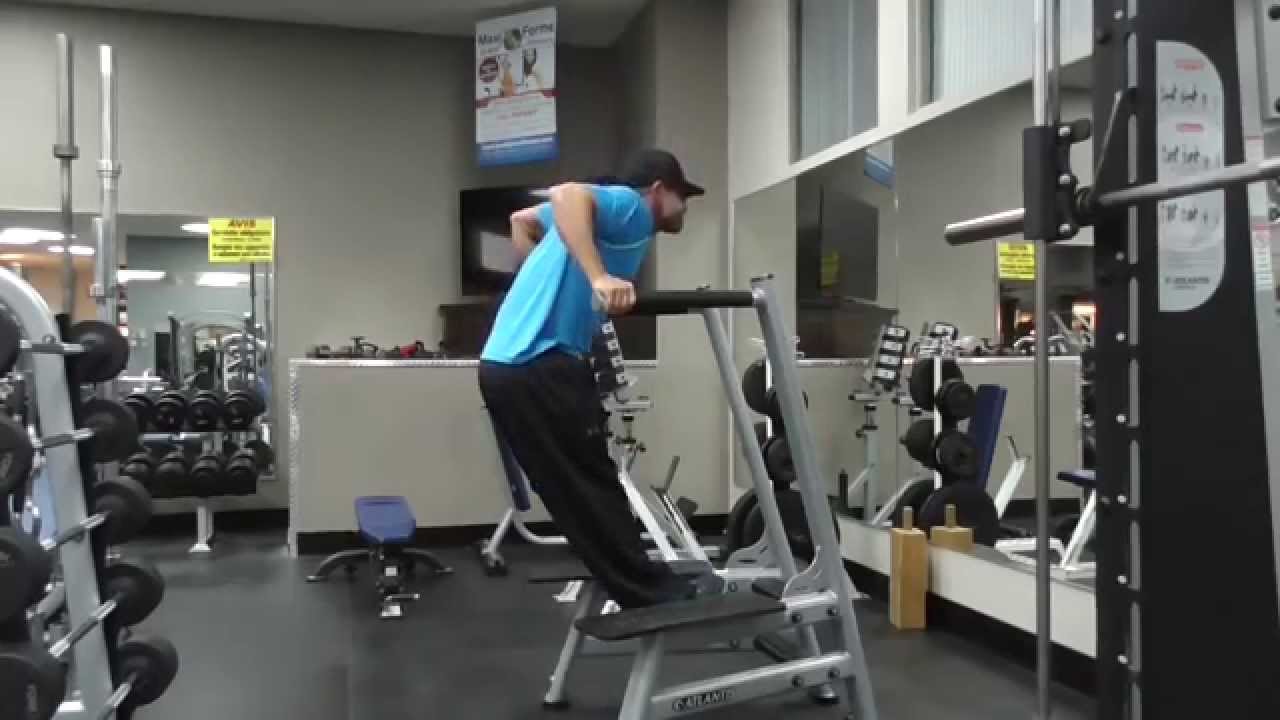by Christian Thibaudeau
Everything you need to know about dips, plus some quick videos to make sure you're doing them right.
Dips are awesome. The problem is, most people use incorrect form. This has given the dip a bad reputation as a “shoulder killer.” And some lifters use correct form but they do the wrong type of dip for their goal. Are you dipping mainly for chest development? Or are you doing it to target more of the triceps? Watch this quick video.
Guide to the Dip Exercise
Chest Dip Guidelines
- Torso forward
- Legs forward
- Medium to wide hand width
- “Gunslinger” elbows position
- Contract the abs to maintain form
- Don’t lock out the elbows at the top position
- Shoulder drops slightly below the elbow in bottom position
- Head neutral: Don’t look up or down.
- To build the chest, do full-range dips with an additional load of 50% bodyweight for 6-8 reps.
Triceps Dip Guidelines
- Torso more upright
- Legs back
- Narrower hand width
- Elbows closer to the body
- Squeeze the glutes to maintain form
- Lock out elbows in top position
- Shoulder drops slightly below the elbow at bottom
- Head neutral: Don’t look up or down.
What If Dips Hurt Your Shoulders?
Dips bother some lifters’ shoulders because they have pre-existing, underlying shoulder issues that need to be addressed. But assuming that your shoulders are healthy and functional, what can you do about it?
Usually feeling something in your shoulder when doing dips is a technique issue, specifically with what happens in the shoulder/deltoid when performing the dip. If you’re turning the dip into a shoulder exercise, you’re doing it wrong. Look at the delt in both of these dips videos.
CHEST DIP
TRICEPS DIP
These are done with proper technique. You can see that while the delt is “rotating” (upper arm moving backward while going down) it isn’t moving forward. It stays in its socket. The biggest mistake with dips is letting the shoulder move forward as you go down. It protrudes out of its socket. This puts a tremendous amount of stress on the shoulder joint and its muscles.
The Solution
If you want to make dips safer for the shoulders, make sure to lower yourself while keeping the shoulder joint in its socket. You do that by contracting the upper back as you go down (pinch shoulder blades together) exactly like you would do in a bench press.
It might make the dips tougher at first because you’re using the proper muscles to do the job instead of leveraging your way up. But as you become efficient with that technique you’ll become much stronger, your strength gains will more easily transfer to barbell pressing lifts, and you’ll stimulate more triceps and chest muscle growth.
Also, the first sign of a good or bad dip is body swing. Those who aren’t doing the dip properly tend to move their torso and legs during the exercise. Those who are very good at dips seem to keep their torso and legs fixed on a sliding rail.




